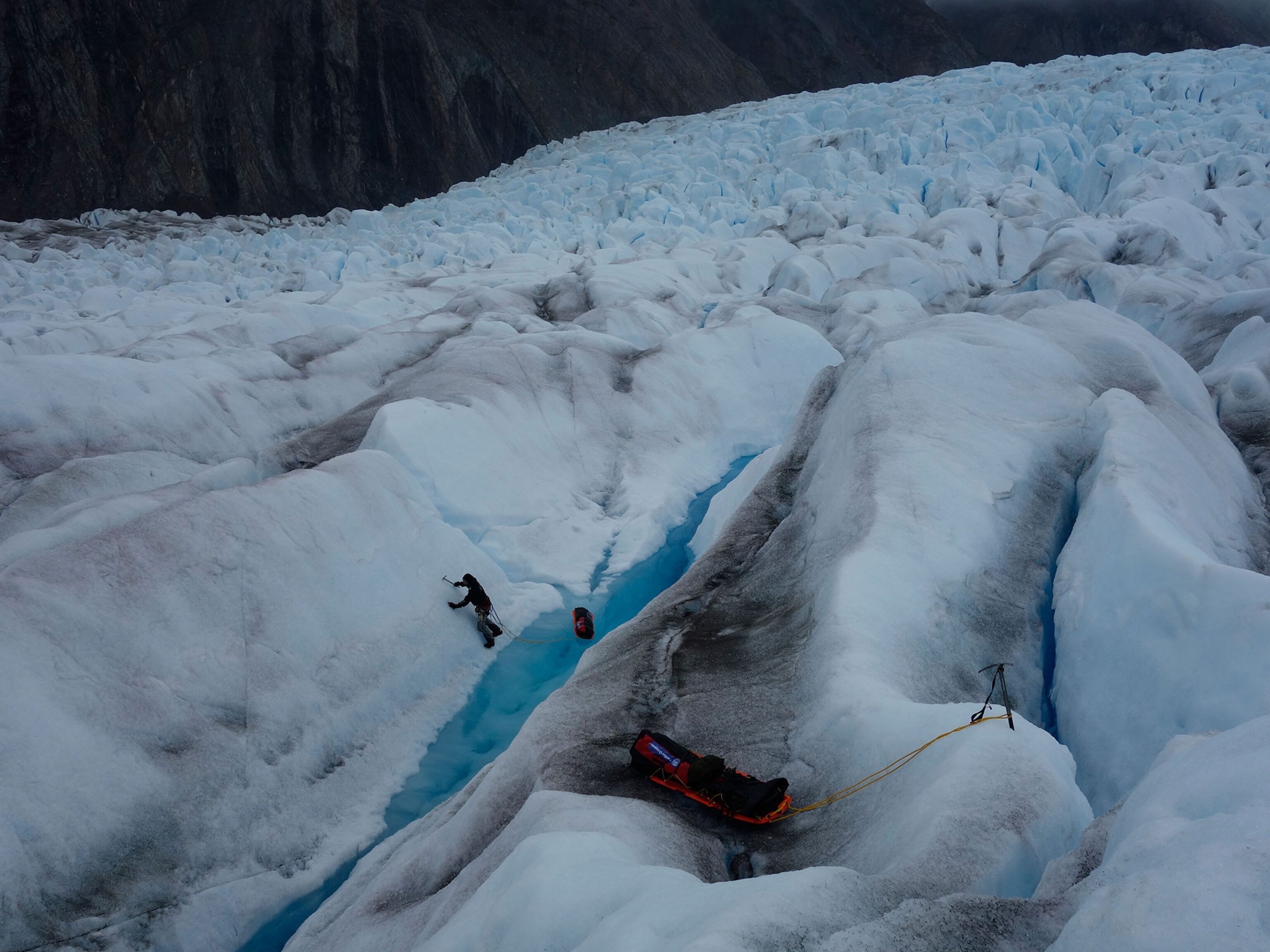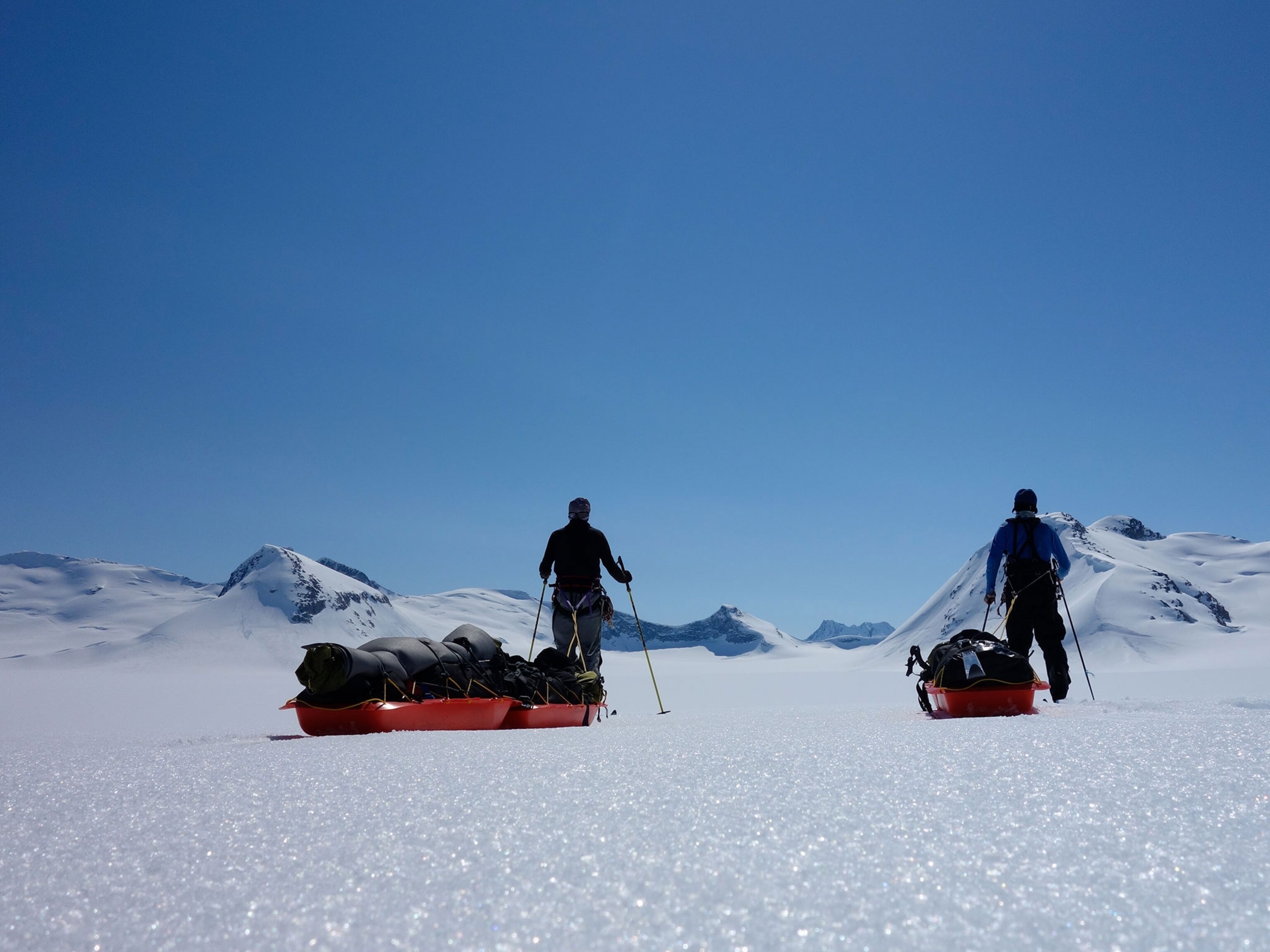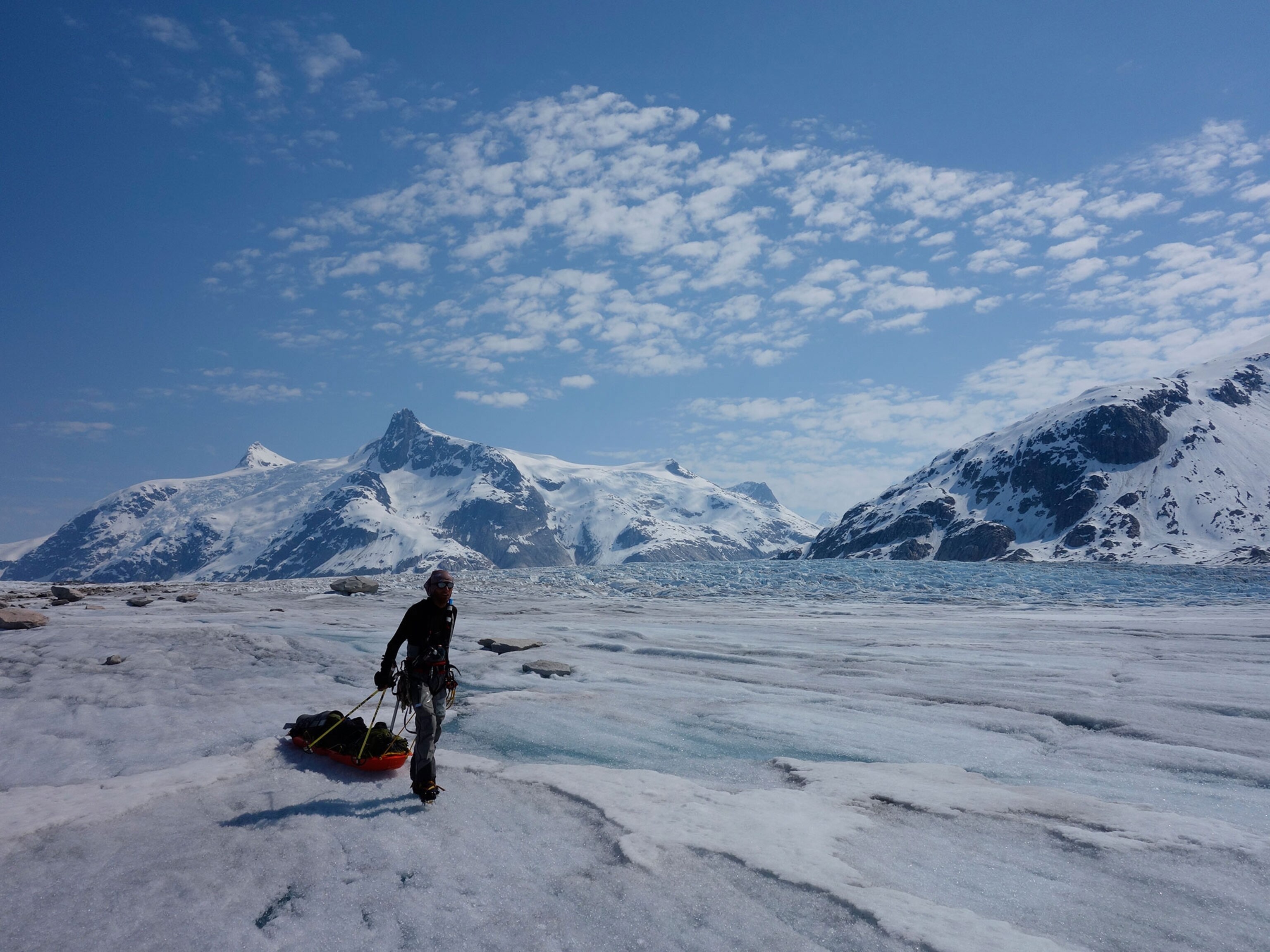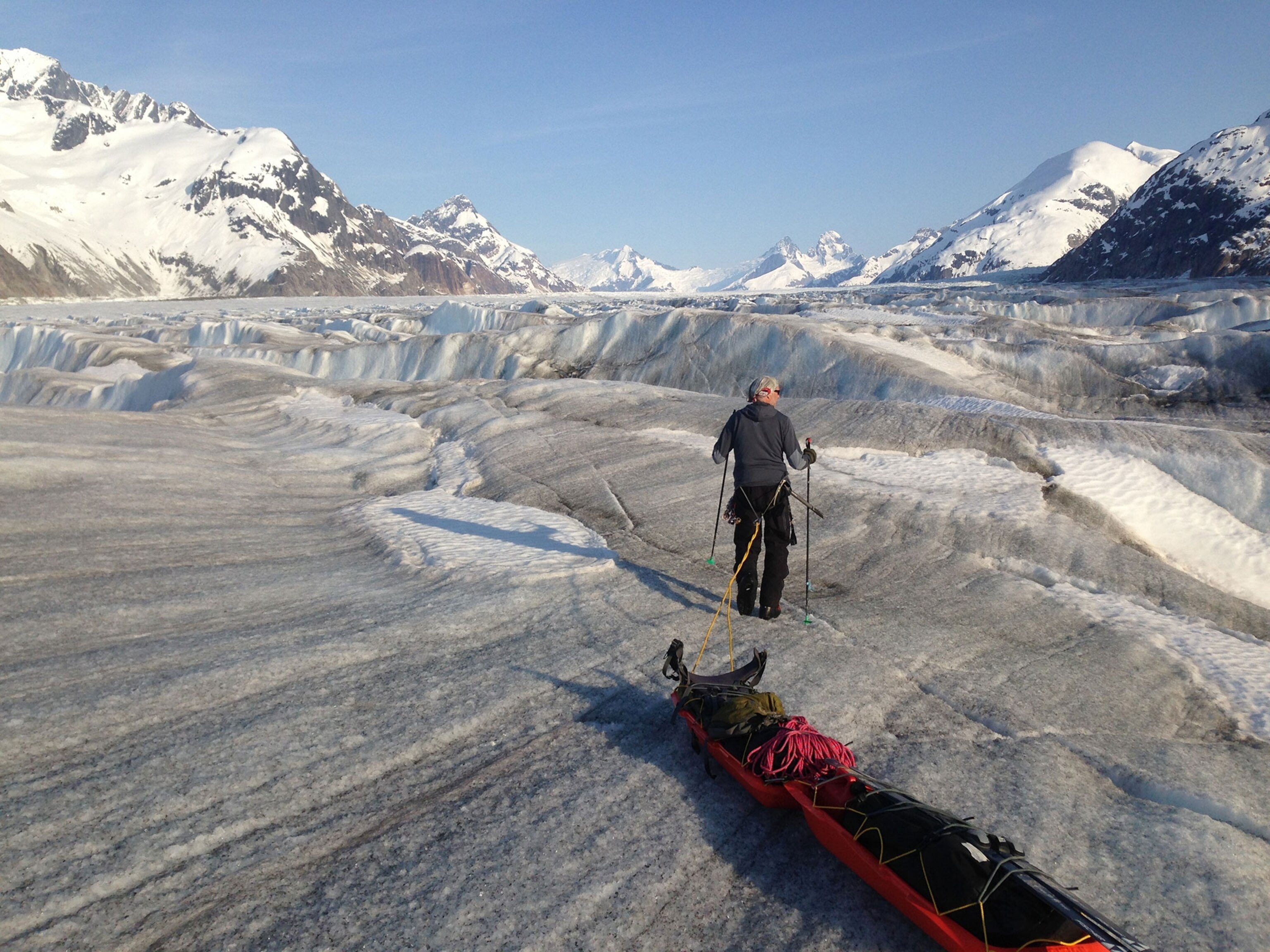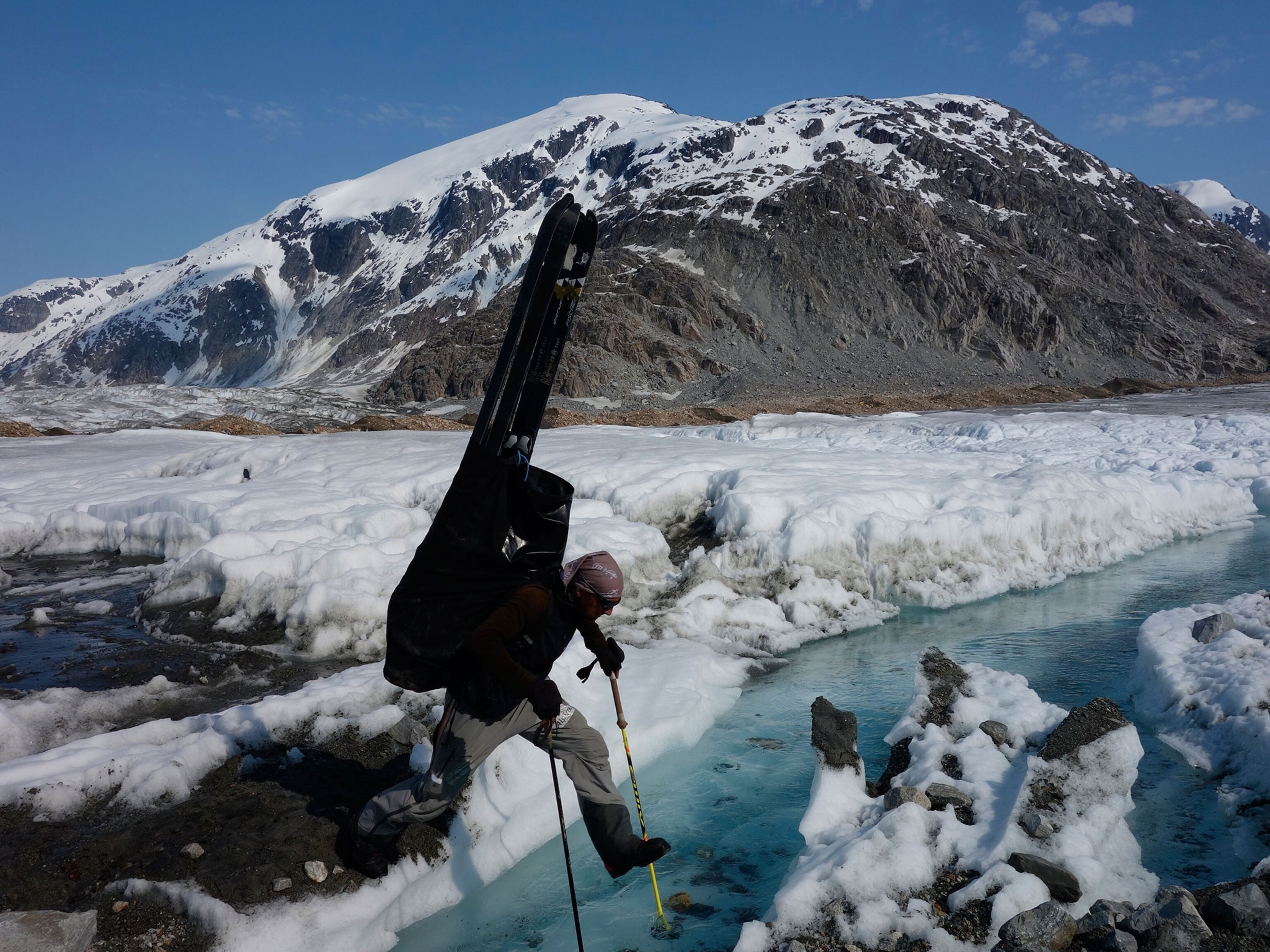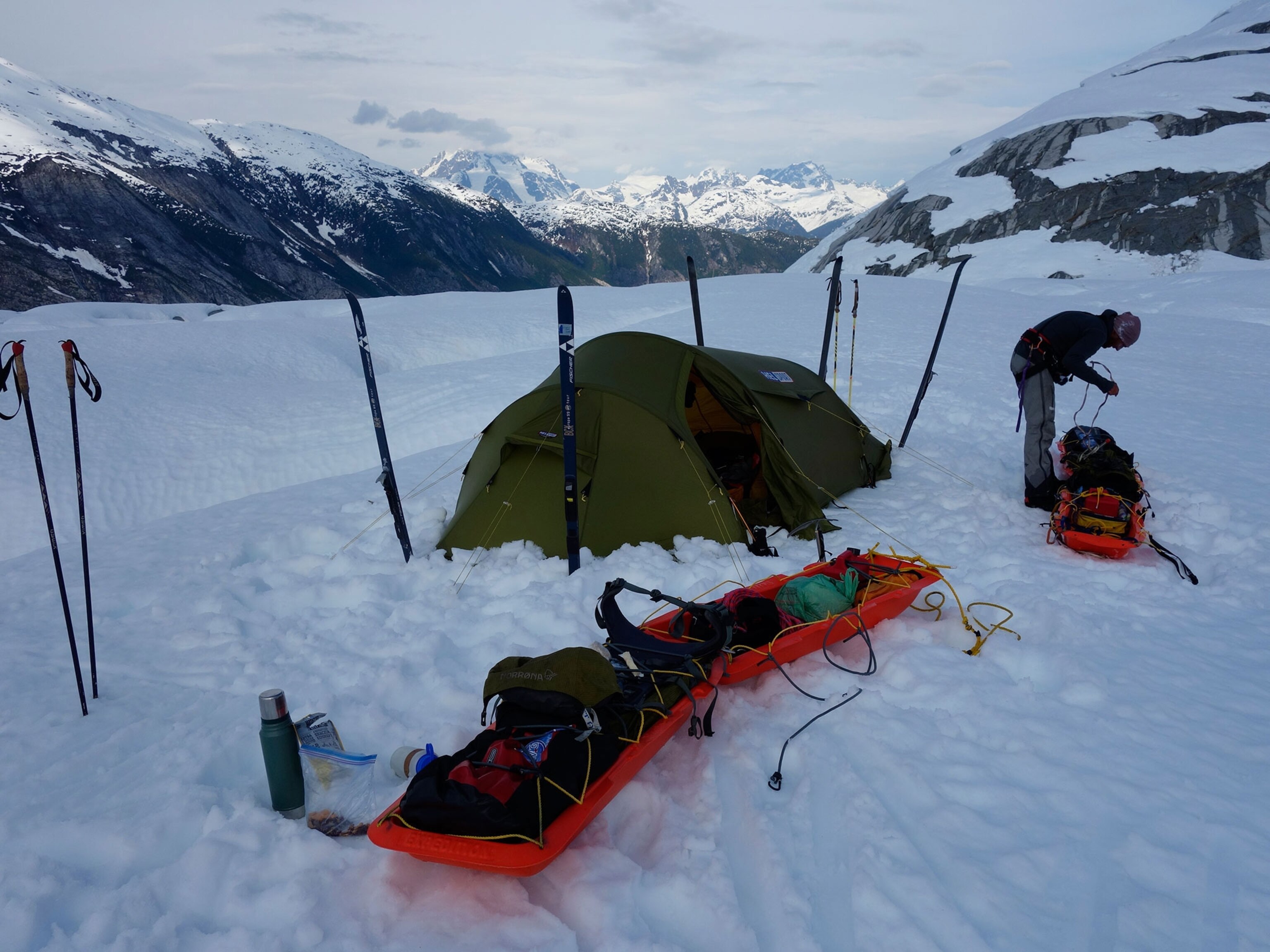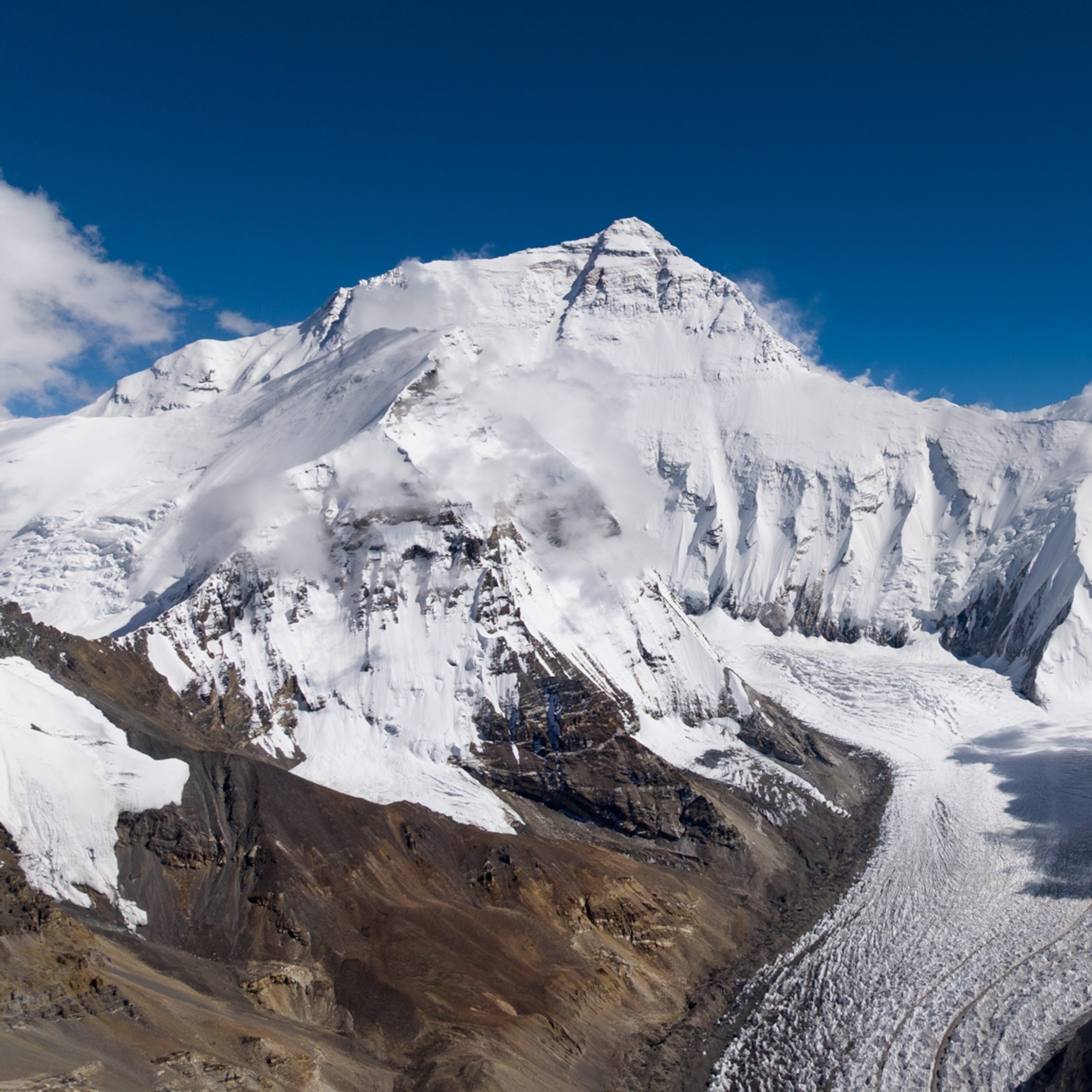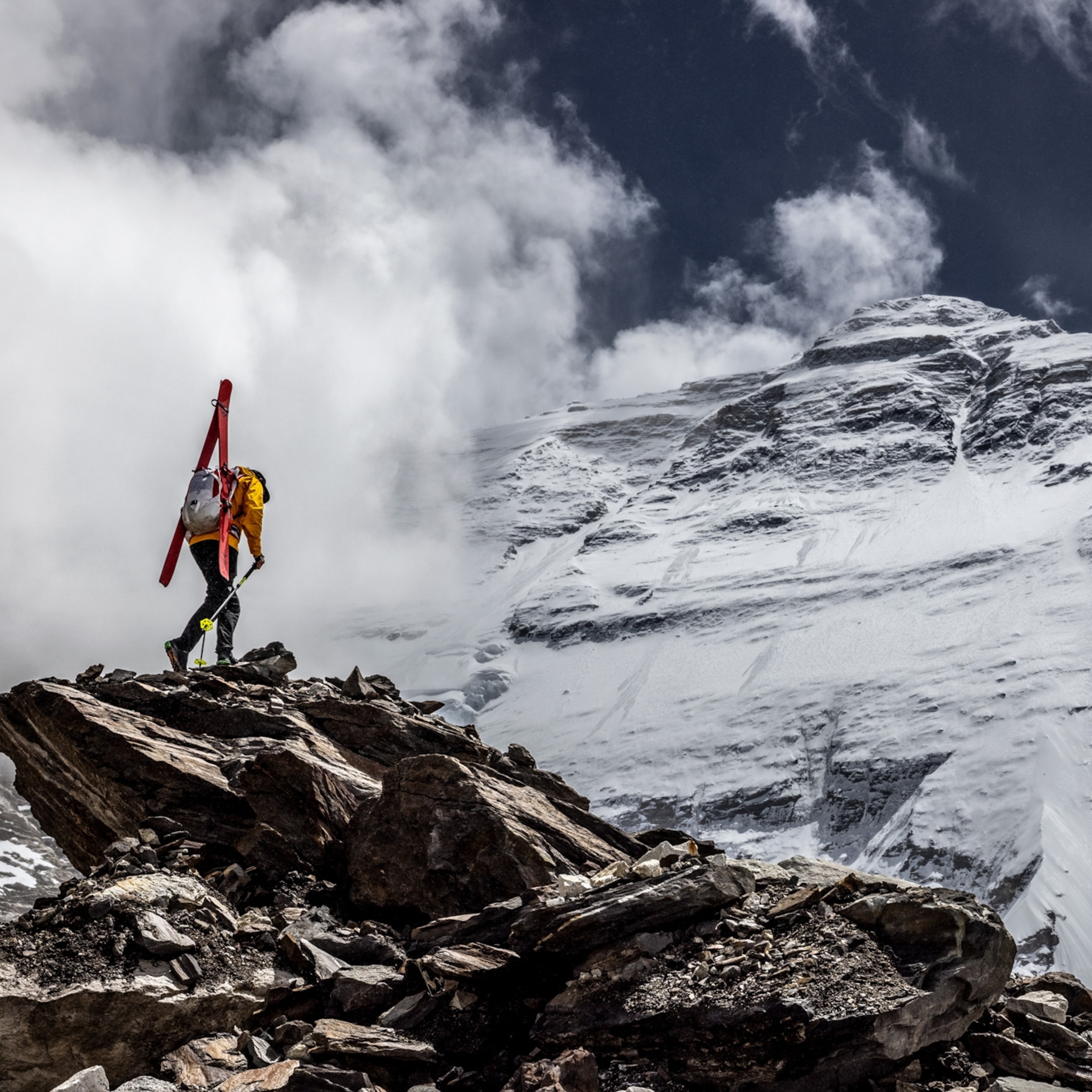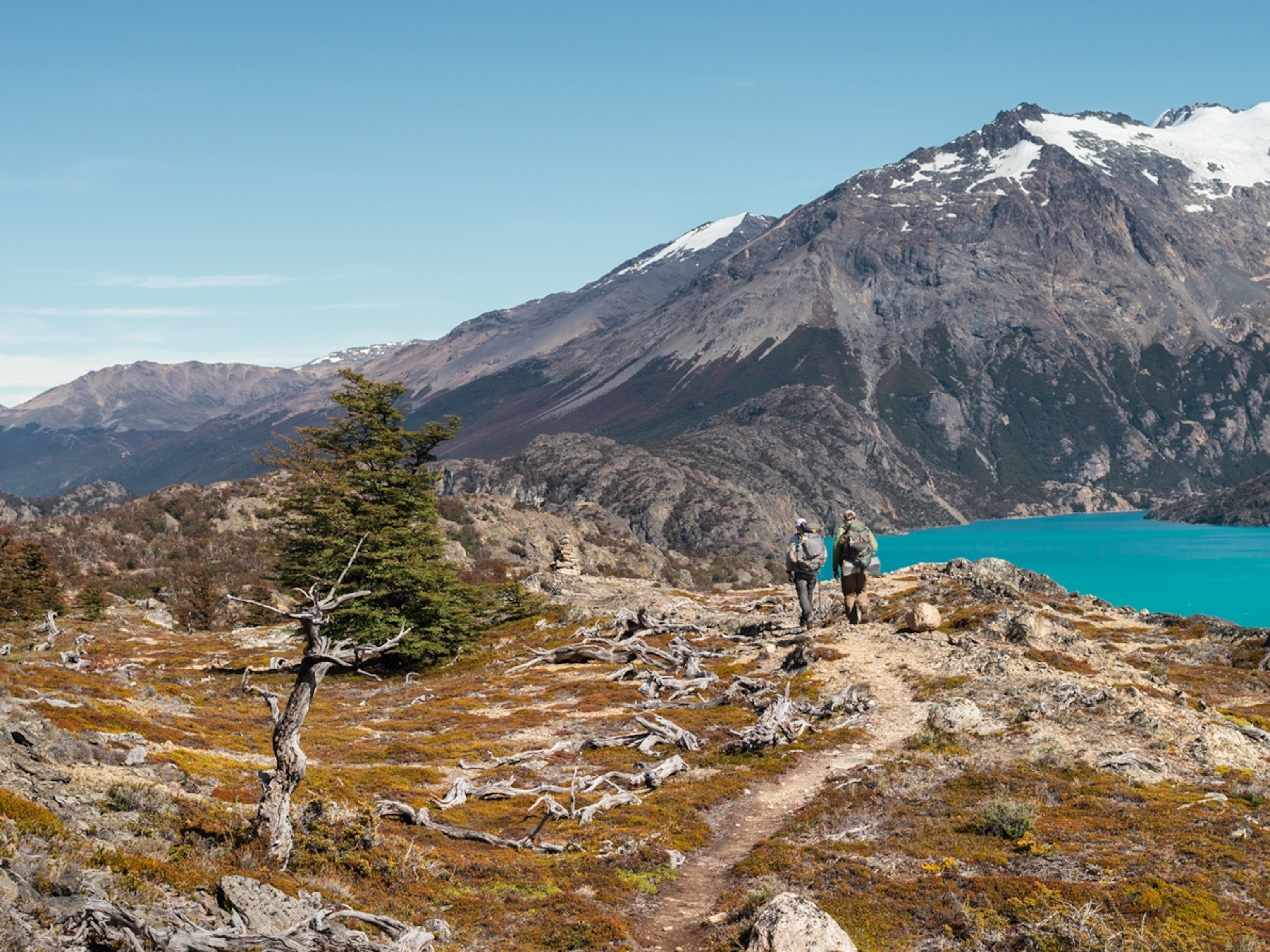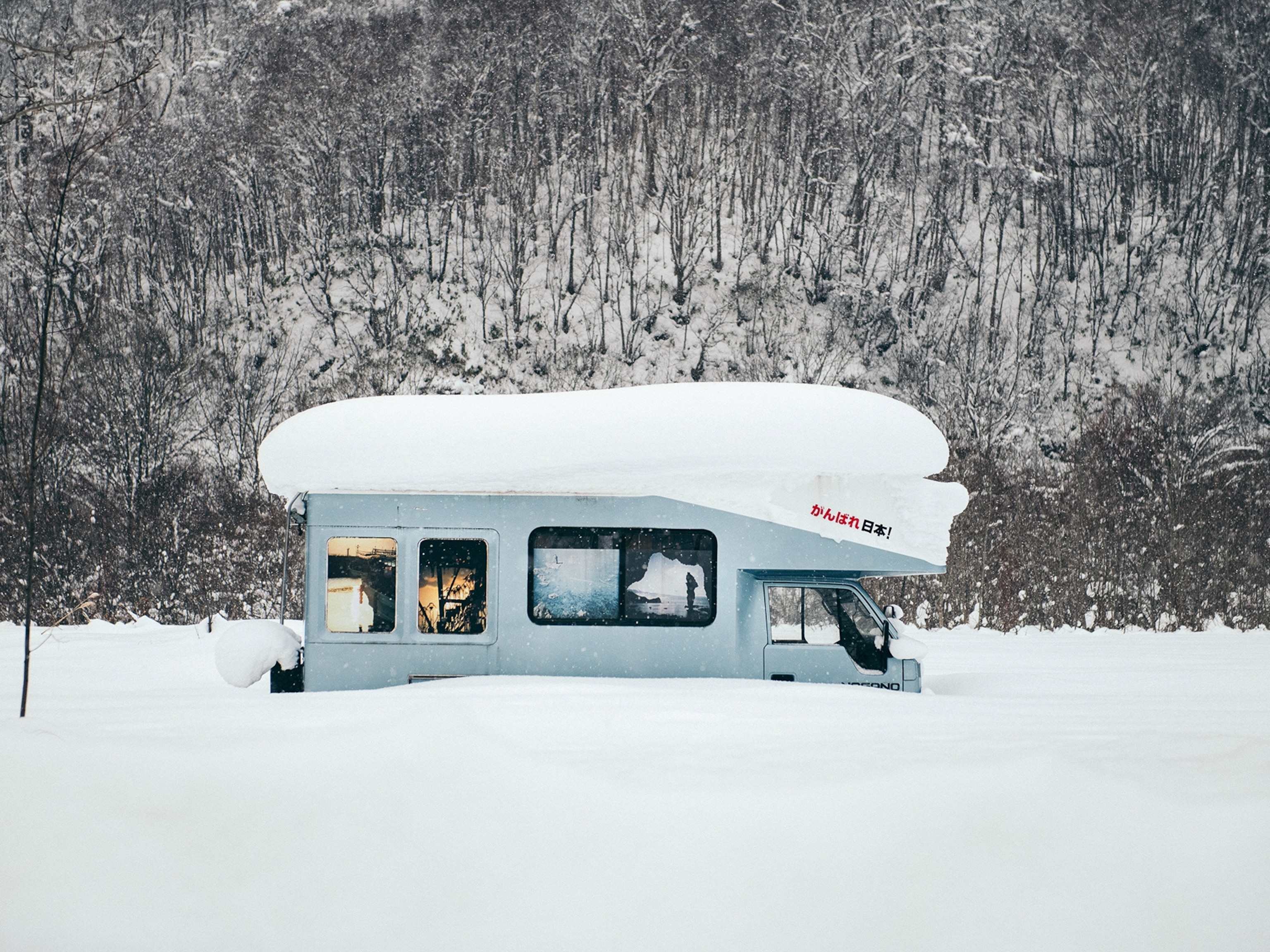Skiing the World's Biggest Glaciers
Braving extreme cold and deadly crevasses, Børge Ousland and Vincent Colliard are traversing the 20 largest ice fields to raise awareness of climate change.
Børge Ousland has made a career out of suffering. In 1994 after two years as a Norwegian Special Forces officer, Ousland notched the first and fastest unsupported, solo expedition to the North Pole, a grueling 52-day journey that saw him lose 45 pounds and suffer severe frostbite. Three years later, he became the first person to cross Antarctica alone and without any outside help, traveling 1,864 miles in 64 days. Then, over 15 weeks in 2007, Ousland and Swiss adventurer Thomas Ulrich retraced Norwegian explorer Fridtjof Nansen’s 1895 trip from the North Pole to Russia’s Franz Josef Archipelago, what’s considered one of the most daring polar expeditions in history.
More recently, Ousland, now 54, teamed up with French adventurer Vincent Colliard, 30, for the Alpina Ice Legacy project. Over 10 years, the duo plans to ski across the world’s 20 largest glaciers in an effort to raise awareness about climate change. They crossed Alaska's Stikine Glacier on their second expedition in May 2015, and in May 2016 they tackled the project’s third glacier, the St. Elias-Wrangell Mountains Range Ice Field. After 19 days and 267 miles in the field, we caught up with Ousland and Colliard in Alaska to talk suffering, partnership, and coming home alive.
This interview has been edited for length and clarity.
Describe a typical day on the expedition.
Colliard: We’d get up at 5 a.m., eat breakfast, check to see if we got news from the outside world, then start skiing at 8 a.m. We’d ski for nine hours, towing our sleds, which were about 175 pounds per person, taking 15-minute breaks every hour. We did about 12 miles a day. Fueling properly is important on a trip like this. We brought about 65 pounds of food per person and tried to eat about 5,000 calories a day. We both still lost about five pounds.
What was the most dangerous part of the trip?
Ousland: There are really three things. One is crevasses. You can have anything from 10- to 100-foot crevasses, which can be covered by snow bridges. Falling in a crevasse is like a trapdoor suddenly opening underneath you, and many climbers and skiers lose their lives this way. The second is avalanches. It’s very, very alpine terrain in Alaska, with steep mountain faces, which, if an avalanche gets loose 5,000 feet above us, it could travel up to 300 miles an hour and fill the whole valley. The third danger is simply weather, strong winds. Wind cools you down quickly, with hypothermia as a very possible result.
The purpose of this project is to raise awareness about climate change, yet you’re flying to 10 countries across several continents. How do you justify your tremendous carbon output?
Ousland: You can’t stop the world from moving around and the solution to climate change isn’t whether we fly to Alaska or not. The solution to climate change is about developing new technology, political will, and to have people understand what’s going on. If no one traveled, there would be no science that would be done.
How do you pick a partner for this kind of trip?
Ousland: They have to have the right motivation and the same mental strength. You have to have the same understanding about why you’re doing this. If you don’t, there will always be conflict when there is a decision to be made, specifically: Shall we continue or shall we give up? They also both need to have the same willpower because when you’re out there, you can’t use your energy to motivate your partner in addition to yourself.
Børge, you’ve completed many extremely difficult expeditions and had success where others have failed. What do you attribute your success to?
Preparedness is one thing; equally important are willpower and stubbornness. Just to be stubborn, I think that’s underestimated. From my winter training in the Norwegian military, I also have lots of good experience handling difficult situations in the cold, where the main thing is to solve the problem in high-pressure situations, no matter the conditions. I learned that when s--t hits the fan, you have to act, isolate the problem, and find the right solution in the shortest time possible. That’s the key element to all expeditions and to many things in life.
Vincent, what was more challenging on this trip—the mental or physical element?
On most trips, the mental element is the biggest part. You can push your body to some places you didn’t know existed if you are strong mentally. But they work together. Strong physical condition will provide good mental confidence.
- National Geographic Expeditions
What’s the most each of you has suffered on an expedition?
Colliard: In November 2013, I was with Børge and some friends crossing a part of the Southern Patagonian Ice Field. On day three, we were walking with our crampons and a team member accidentally stepped on my left foot. His crampons went all the way through my ski boot and fractured my little toe. My whole foot got swollen, and I wasn't able to put on my ski boots again. I borrowed one of Børge's trekking shoes because he has bigger feet. We strapped the shoe onto the ski and I kept on skiing between nine and 11 hours a day for 14 days with this fractured toe. It was very painful.
Ousland: On my first solo trip to the North Pole, I didn’t have enough food, and I really, really pushed myself. I was doing something that had never even been tried before. My rations weren’t sufficient and didn’t provide enough calories per day for the grueling hardship and cold of the North Pole. When I finally reached the North Pole I had lost more than 20 kilos. But that was also my greatest trip personally because there was so much I had to overcome. Not just the cold and the ice, but the fear, the loneliness, and the simple fact that the whole project felt too big for me. Several times on that trip I wanted to give up, but I still managed to push to the pole.
What’s the first thing you do when you get back to civilization after an expedition?
Colliard: As a ritual, I put all my gear out to dry. I enjoy this time because every item I have in my hand is a souvenir of the journey. I also enjoy some time alone, and I search out some fresh, healthy food, fish and vegetables, to eat.
Kelley McMillan is a freelance journalist based in Denver. Follow her on Twitter @KelleyRMcMillan and Instagram @KelleyMcMillanManley.

